Conscious decision for the wrong time display?
All our biodynamics, sleeping and waking, the rise and fall of heart rate and body temperature during the day and much more is controlled by our inner clock. Franz Halberg, one of the founders of modern chronobiology, called this rhythm a circadian rhythm. Following the rhythm of the earth and in the natural alternation of day and night, it has settled on a 24-hour rhythm, although it is actually somewhat longer in us day-active organisms.
This genetically anchored, diurnal rhythm is implemented by our metabolism, which chronologically arranges our life processes into the daily routine. Hidden in this is already the conflict between the biological and ultimately individually defined own time and the time that applies to economy and society (see also Rüdiger Safranski: "Time. On how Time and mankind influence each other") - but this is a different, rather philosophical topic.
The measurement of time – an arbitrary system with considerable influence
"Time is the formal condition a priori of all phenomena in general", said Immanuel Kant, and human society is dependent on an agreement with regard to time.
Whereas at the earliest time one roughly used the position of the sun as a guide, today modern lasers can generate light pulses in the femtosecond range. These time scales are hardly imaginable. A pulse with a duration of six femtoseconds (0, 000 000 000 000 006 seconds) is related to a "one-second pulse" as one millimeter is related to the distance between the earth and the sun (about 150 million km)'.
How did the timing as we know it today come about?
"Physics teaches that there is no such thing as absolute time. So there is no super clock anywhere in the cosmos to which everything is aligned. Time is experienced subjectively." (Werner Kinnebrock „Was macht die Zeit, wenn sie vergeht? Wie die Wissenschaft die Zeit erklärt“, Verlag C. H. Beck, 2nd edition, 2012)
But the human community and its needs demand a formal framework in order to function. Its development runs through the millennia - throughout history, people have divided the day in different ways, measuring hours differently according to season and time system.
It is documented that the ancient Babylonians began to divide time as we know it today. They divided the year according to the lunar cycles into twelve months, day and night into twelve equally long parts = 24 hours each.
Why 12 and 60 as base numbers for time?
The Babylonian time was a heyday of astronomy and mathematics. The number 12 also had religious significance for the Babylonians and was considered a perfect number. In everyday life they counted to twelve with the three knuckles of their four fingers, using the thumb as a pointing stick.
60 is a multiple of 12, a highly compound number with a total of twelve divisors, which makes it much easier to calculate. This so-called sexagesimal system was already used by the Sumerians in the third millennium BC and passed on to the Babylonians. The ancient Greeks used it to divide a circle into 60 parts and developed an early system of longitude and latitude, the basis for minutes and seconds as we define them today.
Funfact: During the Revolution (1793), France considered introducing decimal time: A day should have ten hours, an hour 100 minutes and a minute 100 seconds. However, the corresponding decree never came into force.
For many centuries, minutes and seconds had no meaning in daily life, were mainly mathematical quantities and were used for astronomical calculations. They only became interesting for the measurement of time with the invention of correspondingly accurate clocks.

Why do most clocks show 12 instead of 24 hours?
For the display of time, the dial with 12-hour indication has prevailed; watches with a 24-hour indication such as the TRES 24 from BOTTA remain the exception.
The reasons for this are historical and probably more practical than logical. Tower clocks once announced the time with the chimes of bells every hour, and to count the time precisely at the late hours would have required the utmost concentration. In addition, a dial with few subdivisions also made it easier to read from a distance.
Since humans are known to be creatures of habit, the 12-hour clock face was finally able to prevail.
For a uniform understanding also on a global level, the day is nevertheless divided into 24 clear hours by the Coordinated Universal Time (UTC), which clearly separates day and nighttimes.

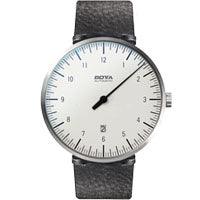
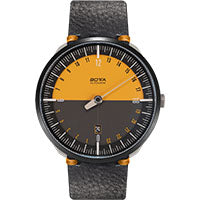
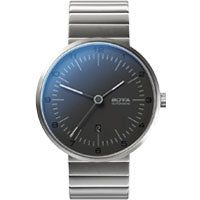
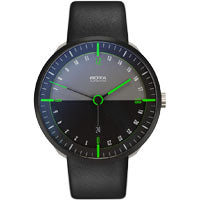
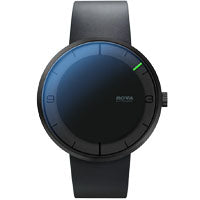
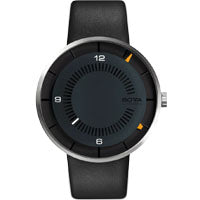

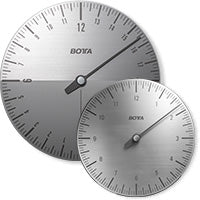


4 comments
Diese 12 Stunden Einteilung hat sich nicht nur für die Zeitrechnung geeignet, denn ich meine daraus
hat sich später auch das sogenannte DUTZEND SISTEM entwickelt.
Erst Napolion hat die Finanzregelung in Frankreich auf das Dezimalsystem ordnen lassen.
Deutschland begann mit dem Kaiserreich nach 1871 langsam mit der Umstellung.
Danke, sehr gut erklärt. Jetzt weiß ich Bescheid.
Es gab schon vor den Babylonier das Zwölfersystem, genau genommen, ab dem 21.März 5.509 vor unserer Zeitrechnung unter den Sumerern.
Ich danke euch vielmals, diese Frage zerbricht mir seit knapp einem Jahr meinen Kopf. Jetzt kann ich in Ruhe sterben